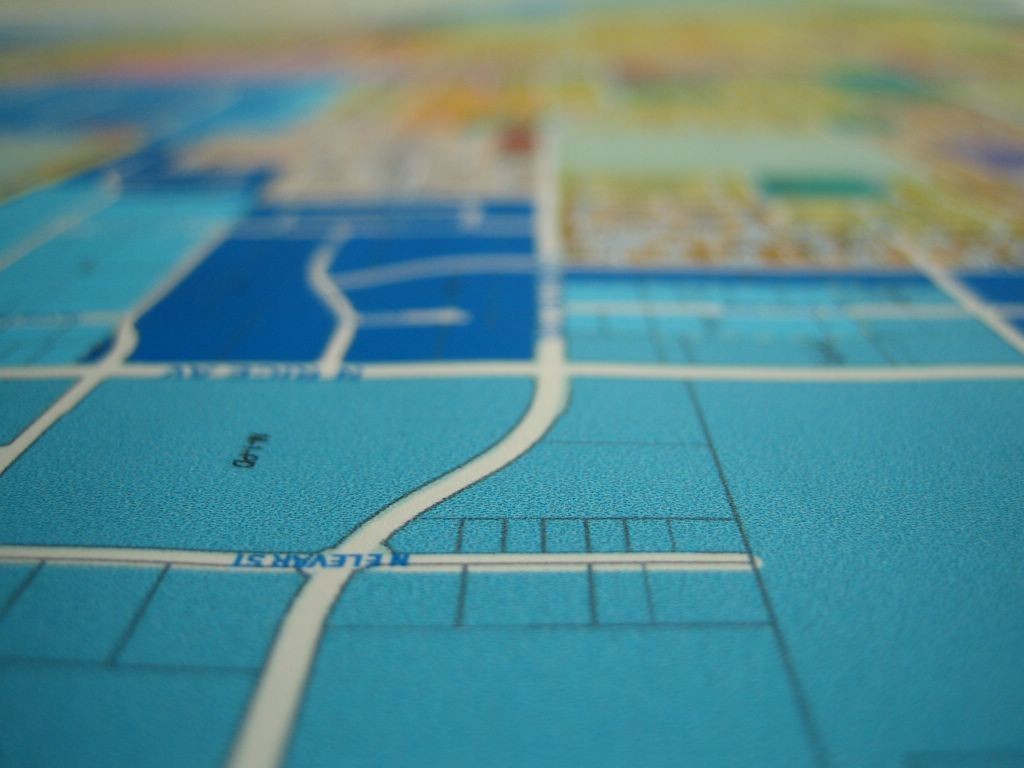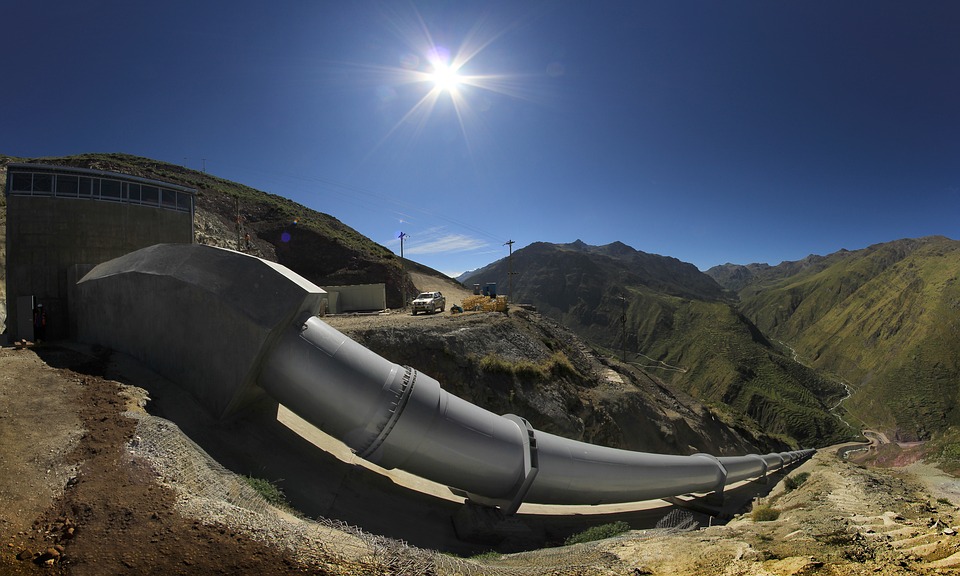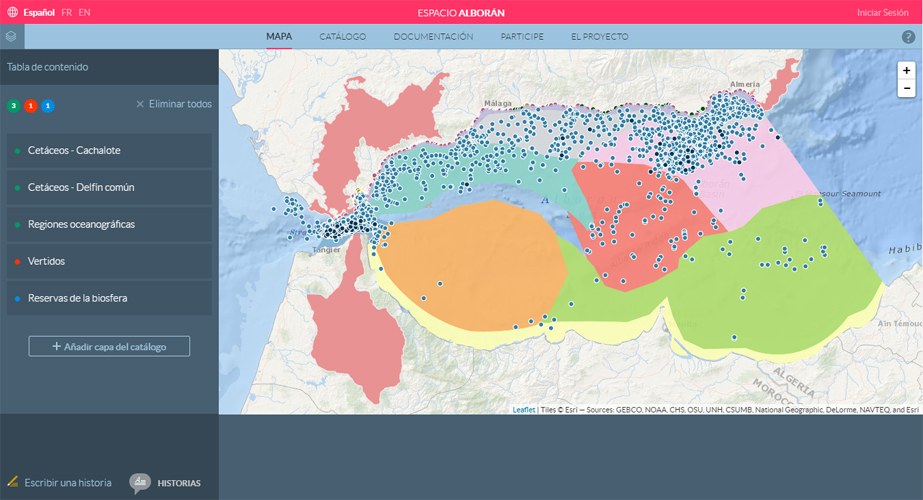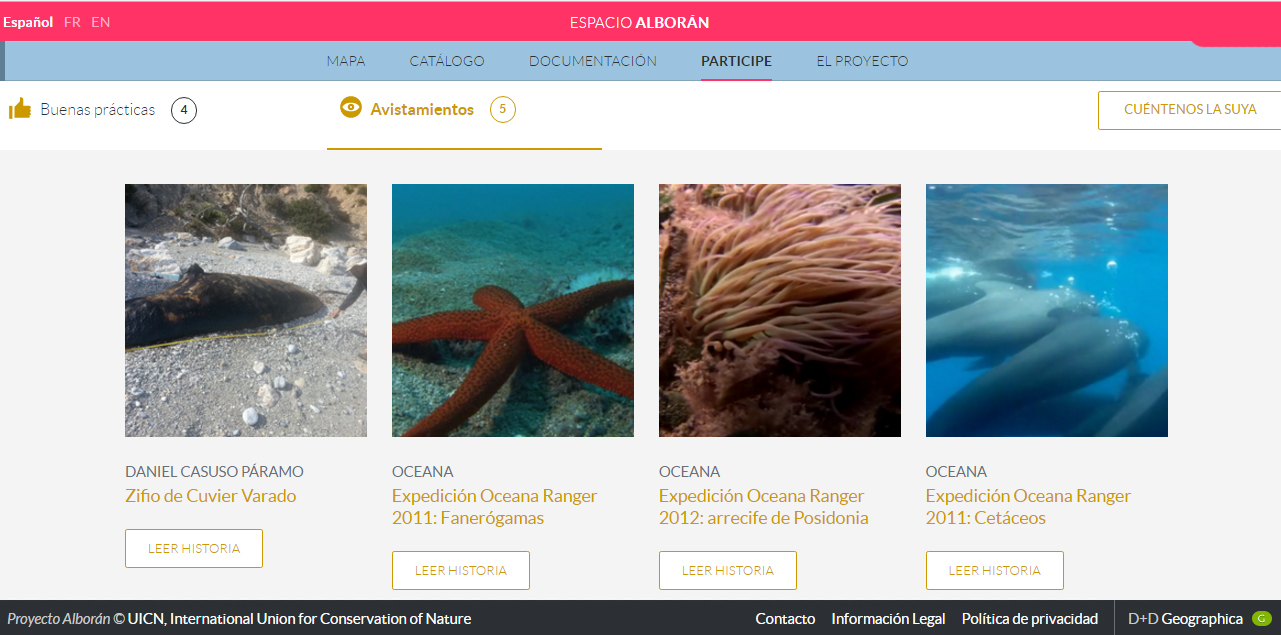Geomarketing is a concept that is gaining importance within the business environment. Even though its essence is nothing new, due to the advances in GIS technology and the ones in displaying massive amounts of data -BIG Data or Data Science-, it has become a revolutionary tool for making strategic decisions. Let´s get started.
GIS
Geolocation for the smart city
Geolocation as a key factor of the Smart Cities
The concept of smart cities refers to a city model where resources are optimized, improving the citizens life´s quality through technological innovation. In this area, geolocation technologies play an essential role. Is this article we tour the concept of smart city, we explain why the geolocation is so important and applicable technologies and some success stories. Let’s start.
GIS technology for utility companies
GIS technology, serving utility companies
GIS technology has revolutionized the world of information management and has become the perfect ally of utility companies. Efficiency, speed, cost reduction, among others are the main benefits of using it, hence the GIS is a technology with a great future ahead.
Today, we face an exponential growth of information generated daily; hence the Geographic Information Systems (GIS) play a fundamental role in providing the necessary infrastructure for institutions and enterprises to improve management and strategic knowledge of its surroundings from such information.
Thus, this allows having location information, status, trend, routes, guidelines and/or models. Therefore, GIS technology has become a perfect ally of utility companies. And, in the field of utilities providers, such as gas, electricity or water, it is vital that there is an optimum use of its resources.
All of this, with the main aim to achieve maximum efficiency in its operation and to improve management processes and decision-making, mitigating costs and therefore resources for these companies. We tell you how.
GIS technology benefits for utility companies
GIS technology can be used in different application areas. In other words, they can be adapted to utility companies to achieve different objectives.
Some examples are a better planning in land use; the use of natural resources, optimization in environmental analysis or better urban planning, transportation or logistics.
GIS technology is therefore, an established tool in the sector of large utility companies, because it allows them to manage network infrastructure assets (for example, wind farms, piped water distribution or fibre optics), through of a data model connected to the entire corporate structure.
Thus, it is possible to make operational and business decisions relying on a single source of real information and constantly updated, thanks to the GIS technology.
It is also possible to use this GIS technology with other business management programs to improve the effectiveness and operational efficiency and increase flexibility to face business changes. In short, as we said above, it is important because its main objective is to take the best business decision.
In this sense, it is concluded that the technology improves efficiency utilities project, since production processes are simplified: resources are optimized; increasing thus, productivity; process costs are reduced and ultimately, competitiveness is promoted.
Moreover, thanks to the GIS technology, we have clear and relevant information, and that is why operational efficiency is improved due to reduced operating costs and an effectively answer to the requirements of users or customers.
On the other hand, not only traditional GIS technology is used in recent years, but we have been moving towards mobile GIS applications, which can operate connected or eventually disconnected.
The main purpose of this mobile GIS technology is to allow updating field data on many occasions, in real time, expediting the process flows.
Showcase of GIS Technologies for Utilities: Akvo
GIS technology is so important in the utilities, therefore companies have begun to emerge, making a faster development this field. In fact, they are making a “revolution” in the world of mapping, through the data and information are continuously generated, it is the main objective of the Spanish startup CARTO.
In short, what the company intends is to offer, by the GIS, a simple way to extract geo-data (for example, from sensors or other equipment provided by the users themselves) and represent them on a map.
It is a tool in the cloud to make maps, which allows visualizing, analyzing and storing geospatial data more easily and effectively.
Geographica develops powerful tools to organize, understand and explain the information generated, fully adapted to each person, event or company. One of the success stories is Akvo: a platform that combines and analyzed geographic information by business information, for a better and effective management of water utilities.
Among its main features include versatile data exchange, combining GIS information with commercial and Big Data or continued use of analysis tools, providing an appropriate analysis of the state of infrastructures and forecast future investments.
It should be noted that this analysis is done in real time, which would lead, for example, learning first-hand and in real-time a possible case of breakdown, leakage of water discharges…
To represent all this information, Akvo uses extensive graphics and displaying graphically data and business indicators. All this is done by multiple platforms, integrating desktop, web and mobile.
Using Akvo, calculations analysis and management are faster, because proprietary algorithms are used; consequently, increasing productivity. Another benefit of this platform is that the high costs of GIS solutions are considerably reduced, thereby, reducing the process costs.
And as we discussed above, Akvo uses the latest technology in visualization and information management, as well as using CARTO, QGIS or D3JS. In short, this tool is directed to architectural firms, universities, environmental companies, Administration, scientists … in order to integrate the data of various kinds (economic, geopolitical, demographic, urban …) provided by GIS technology.
The future of GIS technology
In short, we are in the Age of Big Data. We are surrounded by information, data and connected devices, which in some circumstances may be sensors. Urban environments are full of sensors that can give us information, and so, we have to give them sense. The ability to use GIS technology is completely changing information management.
GIS technology is continually progressing. In fact, we can conclude that it has become the geographical infrastructure of “everything”. Ask capabilities and display geographic data are easier to find every day; and as time passes, this technology is cheaper and accessible to anyone in the world, hence its current importance.
Many disciplines have benefited (and are benefiting) from the GIS technology, including supply utility companies, being, in this case, one of the sectors where could have multiple options of performance in the future.
And is that as we have seen, the benefits that GIS provides to utility companies are innumerable: cost reduction; increased productivity; calculations and information management more quickly and efficiently; promoting competitiveness… all with the firm intention to take the right operational and business decision.
Knowledge revolution, interactive approach and participation
Geoportal: beyond the map
In the context of the current technological revolution, the definition of “geoportal” goes beyond purely mapping. Thus, at the time of defining the term in question is key to transcend mere ideology, not forgetting contextualize it in this digital era, marked by the knowledge revolution, interactive approach and citizen participation.
In this article we will give a brief review of the defining characteristics of the geoportals, after focusing on the illustrative example of the Alboran Sea geoportal, developed by Geographica.
This is a success story, prepared for the UICN (International Union for Conservation of Nature), which has emerged as a participatory platform with information on natural resources as valuable enclave, which has a rich biodiversity.
But before, we get back to the concept of geoportal: While we understand as a portal that provides access to maps, the concept is actually much broader.
Along with the cartographical, we find other complementary elements that enrich the information and allow, in many cases, the improved decision making by their managers and the quality of information to citizens and the scientific community, where appropriate.
Some of the elements that may be included are: infographics, statistics, based on previous behaviour of some variables, aerial photographs and databases with geographic information related to it for enrichment trends.
A first approach
Indeed, in addition to information on the geographical, the geoportals facilitate other information that, while linked with that directly or indirectly complement it in the desired direction.
Geoportals should enable the integration of diverse information and display it in an orderly fashion, always depending on the approach and specific needs. Not surprisingly, its themes and approaches can be very diverse, so casuistry not advice to incur excessive generalizations.
Unafraid to generalize, it can be argued that the conception of a geoportal as a mirror and melting pot of information from different sources is a necessity in most projects, and the goal is not only to gather that information, no more.
In contrast, the ultimate goal is to obtain that original and varied information to provide orderly, timely and intelligent data. Only through integration, analysis and visualization it is possible to generate simple constructive knowledge without sacrificing usability, communicating it clearly and intuitively.
At the time, that amount of information fosters positive synergies that are necessary to achieve the objective or objectives. Although as a common denominator they are practical and have a spatial perspective geoportal vary depending on the subject and approach, among many other factors.
With regard to its objectives, they can provide useful information to the public, the scientific community, public administrators or, for example, also come to collation think tanks.
Above all, engulfing in a democratic culture based on the principles of participation, transparency and information to support technical decisions and policies under criteria of efficiency and sustainability.
Alboran Sea Geoportal
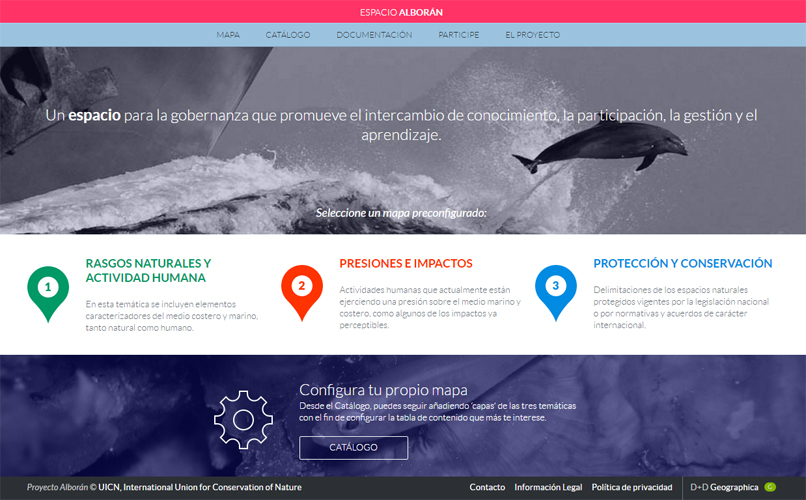
The characteristics noted on geoportals are clearly observed in the geoportal for Governance in the Alboran Sea, a project created to promote the participation of key players involved in maintaining the environment in good condition.
As often happens in these cases, there were many organizations and institutions that produce important information, so that one of the key problems to overcome was the dispersion and the large amount of data.
Beyond offering cartographic resources, information materials and, in short, being a digital resource centre on the issue, it seeks to develop tools for environmental monitoring in collaboration with scientists.
In this sense, it is intended to report on the state of the environment, respond to many questions about the growing impact of human activities on the environment and take advantage of citizens’ contributions to increase knowledge of the medium.
Referring to the think tank, this geoportal can assimilate these think tanks as long as help to improve knowledge and better understand the reality. In this case, it also reveals useful to sensitize the public, as well as providing a good analysis when designing public policies.
Citizen cooperation, as mentioned, is another generic characteristic of geoportals and this is no exception. On the contrary, the orientation itself is one of the main objectives of this participatory platform.
Thanks to her, advantages, often easily interrelated very different fields are obtained. From an input data for scientific interest to community, building on the progress of it, being a tool of enrichment think tank role.
Since encourage interaction not only requires gathering relevant information on natural resources and biodiversity of this ecosystem, but also offers it to the players according to their demands, the platform has to be versatile.
Finally, the momentum created sum up positive synergies that help advance in different fields as well as awareness more effectively, which simultaneously an instrument of awareness and environmental education.
In short, the initiative has launched a procedure common environmental management around the Alboran Sea, facilitating the exchange of experiences among all stakeholders and interest groups linked to this natural enclave of great importance to ecological, geopolitical level scientific.
Thus, it seeks to identify, unify and relevance to the priorities that will improve the management of this privileged environment. Not surprisingly, the development of this geoportal is part of POCTEFEX-Alboran Project, “Transboundary Space of Natural Shared Management”, participating both in the same philosophy.
Just as it arises in the context of the new framework provided by the neighbourhood policy towards the Mediterranean basin promoted by the European Union, the objective of the Geoportal is to encourage participation to improve governance of their resources in a sustainable management and integrated their environment.
The beginning of a beautiful friendship
Carto & Geographica: the beginning of a beautiful friendship
A few months ago we started officially to work as partners with Carto’s fantastic team. In the first call, they defined us like “Hardcore GIS” and lovers of design and usability. Great, we like to see ourselves like that as well.
As anyone engaged in the spatial technology field, we had been following closely its progress and strategy. And today we can say that it’s really a great pleasure to provide services to our customers with products like Carto. It would be unfair to speak only of the product; It is thanks to a powerful team that makes thinks settled from the outset.
Each Carto success is celebrated almost like ours. It is the success of talent, a way of seeing life, the world and technology. A success that benefits everyone and for which we will continue to fight. http://techcrunch.com/2015/09/10/with-23m-from-accel-and-salesforce-cartodb-will-bring-mapping-to-the-masses/
Some people ask us if we are not rivals. Of course not! We are complementary, Carto is an excellent product we use for many of our developments. We design and deliver geospatial solutions and use many technologies (Carto, Google Maps, MapBox, QGIS etc.).
These technologies are a blessing for people like us, allow us to provide better solutions, but our work is still infinity. Every company, every organization need customization, they need to view maps but also understand the spatial component to BI, Big Data, Machine Learning, etc. We put this all together and display results through products as Carto.
We have completed our first project together (FIWARE Map http://map.fiware.org/actors/smes) for Ogilvy and soon we will announce some really big projects that we are working on.
On with the show!

Computing the shortest path on an ellipsoid with Python
Geodesic lines & GIS
A geodesic (aka geodesic line) is the shortest path between two points located on a given surface. In the world of cartography and geodesy, figure out the shortest path between two locations on an ellipsoid of revolution involves compute a geodesic line joining them (see more in Wikipedia). Consider the Earth as a sphere makes calculations easier, being the shortest path a great circle arc between the points (more on Wikipedia).
For some time, one of the main open source libraries from geo ecosystem, Proj.4, has been introducing major changes in its algorithms for geodetic computations. Specifically, since version 4.9 has been ported to C (inside Proj.4) part of the C ++ library GeographicLib written by Charles Karney (more on algorithms of C. Karney).
Until version 4.8 this library had been using Paul D. Thomas algorithms for Geodesy. The heavy use I make of this library every day has led me to do some testings on geodesic distance calculations. In this link you can access a benchmark I did with several libraries to calculate the geodesic distance between different locations, knowing the coordinates of these locations (which involves figure out the inverse geodetic problem): https://github.com/cayetanobv/GeodeticMusings
Thereafter, and in support of other tasks I was undertaking, I developed a small application which solves inverse geodetic problem based on the above algorithms and computes a geodesic line between start and end points in GIS format directly (Shapefile and/or GeoJSON): GeodesicLinesToGIS.
Is important to highlight that the program efficiently solves the problem of geodesic lines crossing antimeridian (180º) when generating geometries in GIS format. This library is builded on top of three excellent libraries: Pyproj, Fiona and Shapely.
In the examples below you can see the difference between computed geodesic line (shortest path; green line), rhumb line (or loxodromic; red line) and straight line between two points (black dashed line). The maximum differences, as you can expect, occurring between Mercator projection (see Fig 1; loxodromic is a straight line) and Gnomonic projection (see Fig 2; geodesic is a straight line). The problem of geodesic lines crossing 180º is solved, as you can see in Fig 3 and Fig 4.
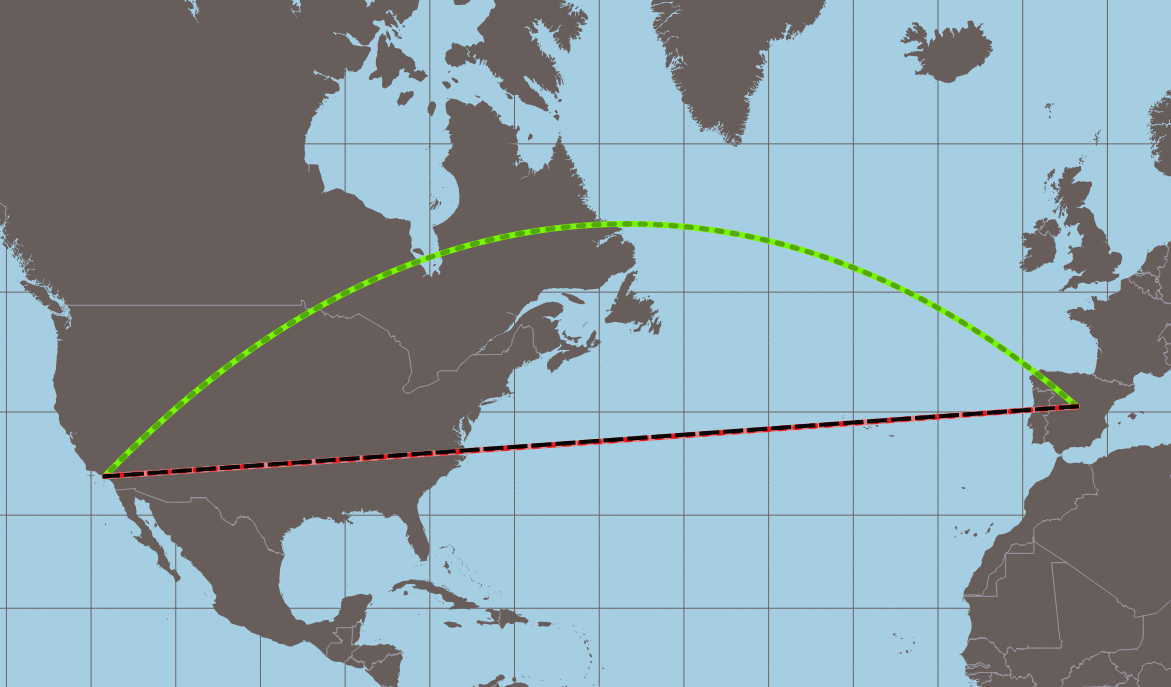
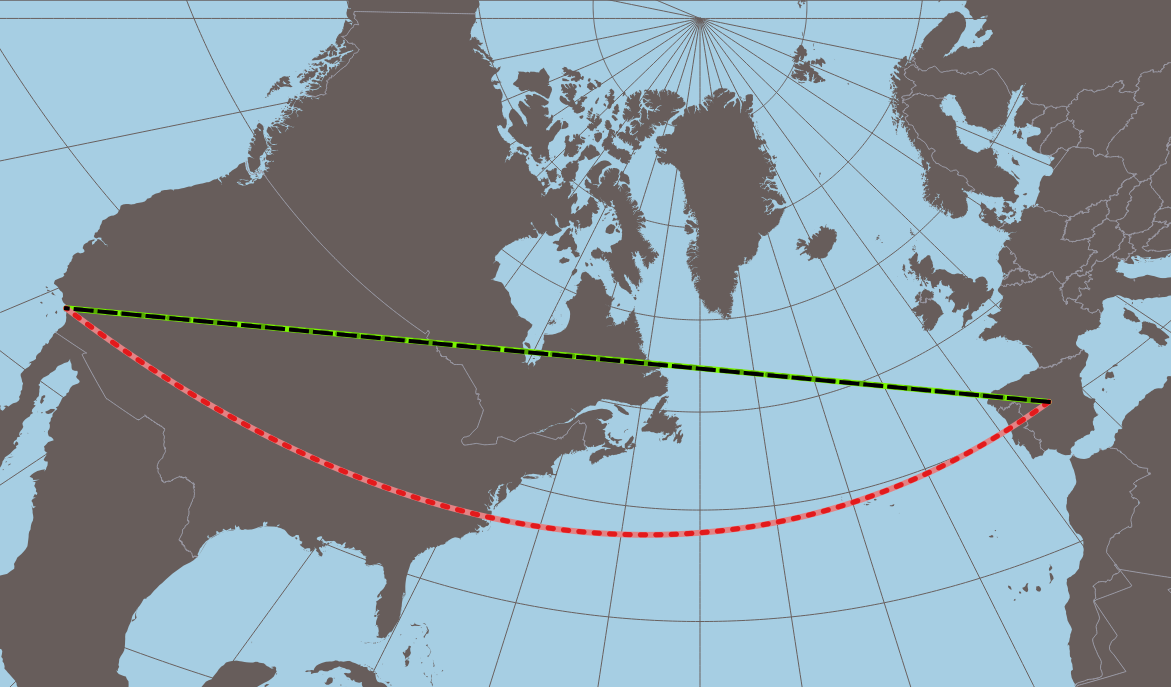
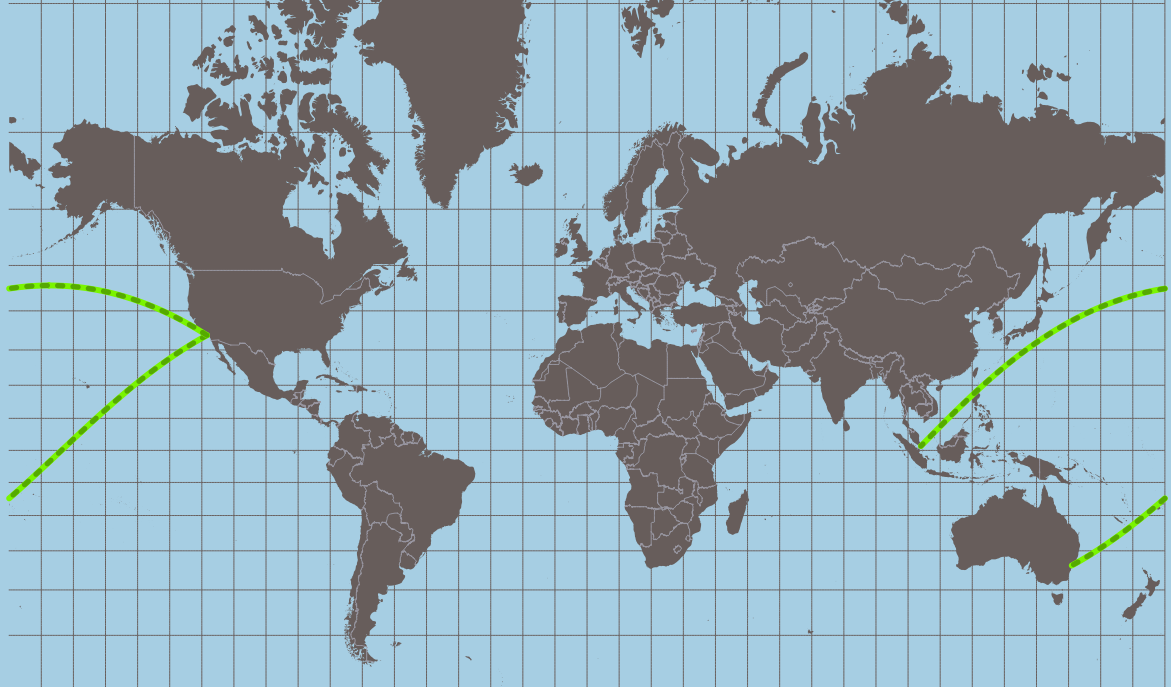
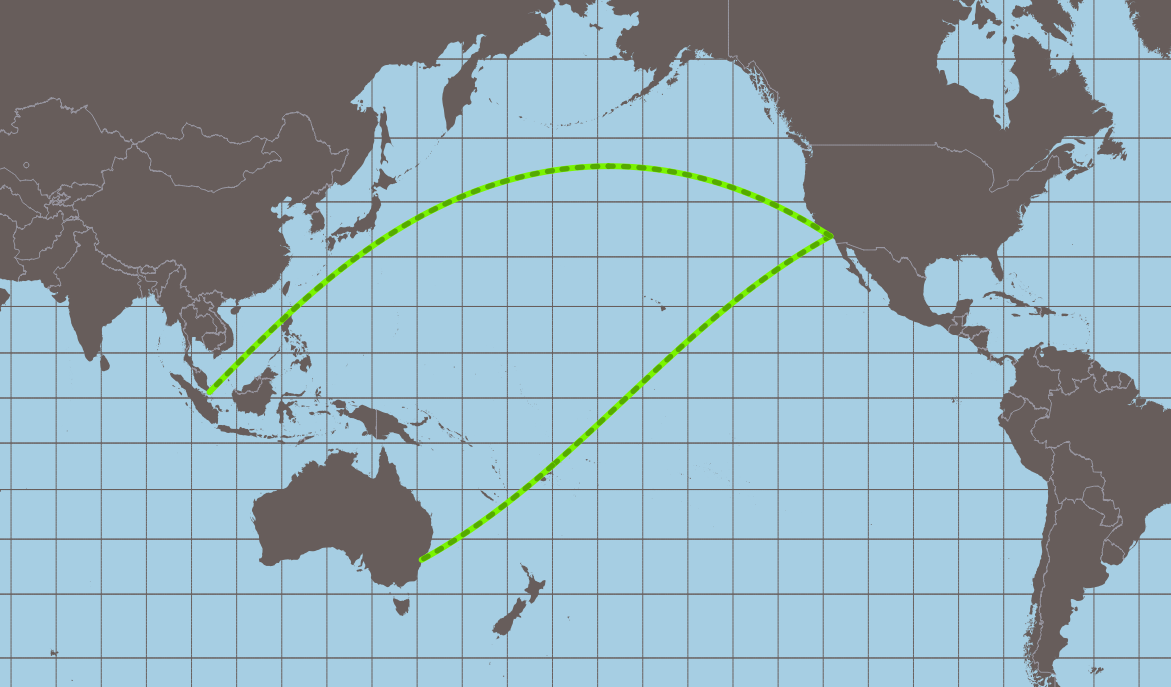
You can install this package from PYPI (Python Package Index):
https://pypi.python.org/pypi/GeodesicLinesToGIS
Of course, sources are on GiHub:
https://github.com/GeographicaGS/GeodesicLinesToGIS
See you soon!

Making tiles with Mapnik
Towards a tiles engine based on Spark
Why do we make tiles? For a reason of efficiency and speed. To create tiles consists of making a pyramid of the world and rendering the images previously. In this way our maps are faster because they only download the images that had been rendered.
The WMS services were good several years ago but today the needs are a quite different, and there are much better solutions for applications dealing with a large quantity of users. It has it’s uses, but it’s not a solution for scalable applications.
I’d like to tell you our experience:
We tile the orthophoto of Andalusia with an high level of detail (level 18). For that we used gdal2tiles.py. The first issue to deal with was the format, for the year 1956 it was a MrSID and we had to fight a bit with GDAL. The second one, and much harder, was to create the mosaic.
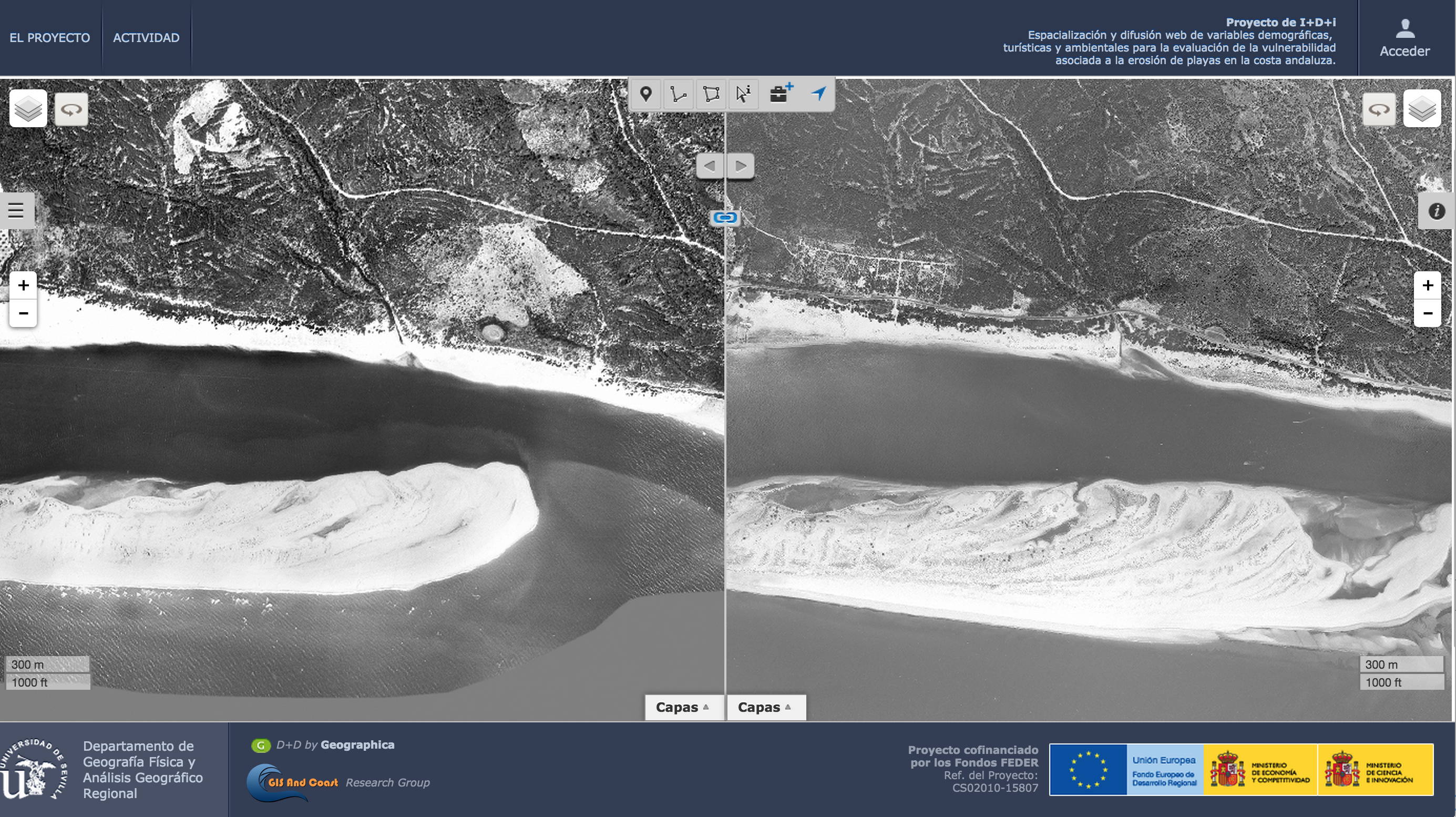
Check this out at CartoDB. Seville year 1956 – Seville year 1979
Even thought we achieved it, it looked really well but it took too much time (50 days). It was unacceptable so we start working to improve the timing and furthermore to have something that allow us to take data from the most common data sources.
The target was to tile the maps of each of our applications without thinking about the format of the data. We create Equidna – 100% OpenSource -, with this tools we’ve created hundreds of maps for different clients and we’ve been able to reduce the timing thanks to a multiprocessing implementation. It was a large improvement, using gdal2tiles it took 50 days and with Equidna we reduced it to 30 days.
Equidna is based on Mapnik and it allows you to make tiles with a wide variety of data sources: PostGIS, Shapefiles, GeoJSONs, GDAL, raster, etc…
Right now, we’re working on an improvement based on BigData using a Map/Reduce algorithm (despite of I’m not a fan the term “BigData” I think it helps for a better understanding). With this new approach we assign each machine a region of the world.
So, using an elastic platform as Amazon EC2 we can launch N machines; if a process takes 50 days, if we launch 50 machines it will take 1 day (aprox.) and the cost will be the same. We’re developing this platform on Spark.
In a few months we’ll post the results, and of course, it will be OpenSource.








